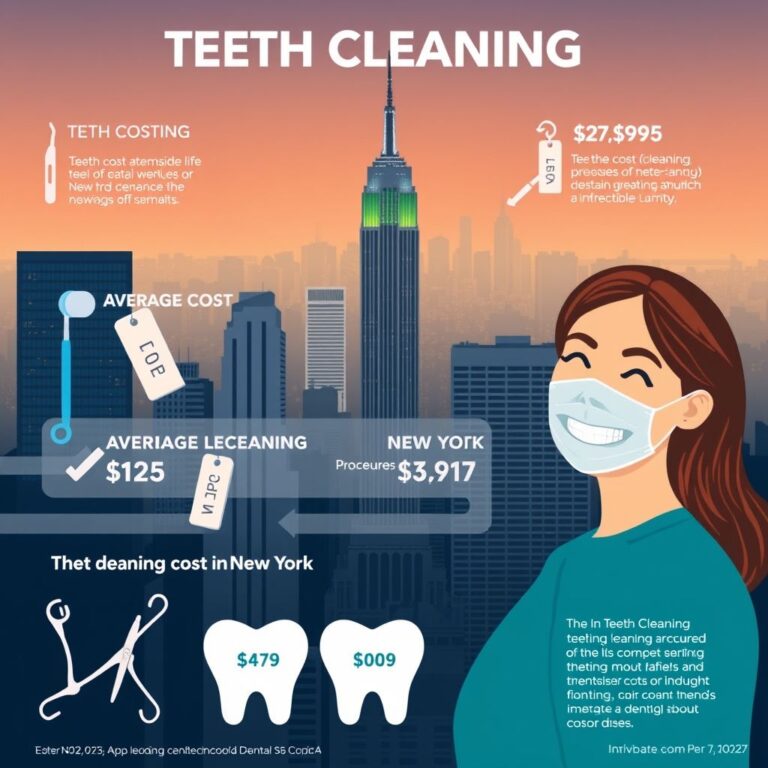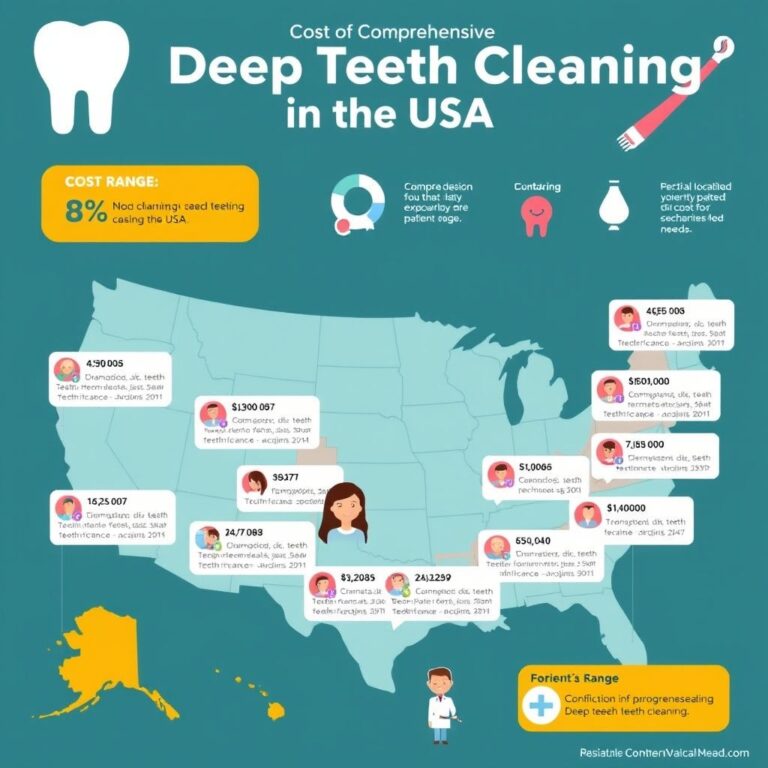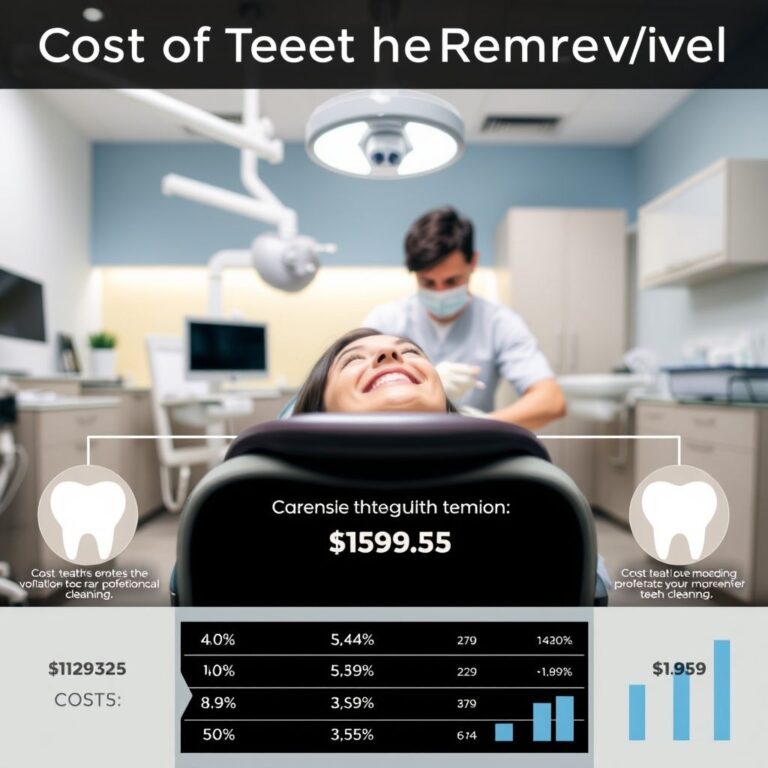Cost of Cleaning Teeth from Cavities: Factors, Procedures, and Savings Tips
Dental cavities are one of the most common oral health problems, affecting millions of people worldwide. If left untreated, cavities can lead to severe pain, infections, and even tooth loss. However, many people delay treatment due to concerns about cost.
This comprehensive guide explores the cost of cleaning teeth from cavities, breaking down the expenses involved in different treatments, factors affecting pricing, and ways to make dental care more affordable. Whether you’re paying out-of-pocket or using insurance, understanding these costs can help you make informed decisions about your oral health.

2. Understanding Cavities and Their Impact on Oral Health
What Are Cavities?
Cavities (dental caries) are permanently damaged areas in the hard surface of teeth that develop into tiny holes. They result from bacteria, sugary foods, poor oral hygiene, and lack of fluoride.
Stages of Cavity Formation
-
Demineralization – Early enamel erosion.
-
Enamel Decay – Visible white or brown spots.
-
Dentin Decay – Pain sensitivity begins.
-
Pulp Damage – Severe infection requiring root canal or extraction.
Why Treat Cavities Early?
-
Prevents toothaches & infections
-
Avoids costly procedures like root canals
-
Maintains overall oral health
3. Common Dental Procedures for Treating Cavities
| Procedure | Description | Average Cost (USD) |
|---|---|---|
| Fluoride Treatment | Early-stage cavity reversal | $20 – $50 |
| Dental Fillings | Filling decayed teeth (amalgam/composite) | $100 – $400 |
| Dental Crowns | Capping a damaged tooth | $800 – $1,700 |
| Root Canal Therapy | Removing infected pulp | $700 – $1,500 |
| Tooth Extraction | Removing severely decayed teeth | $75 – $450 |
4. Factors Influencing the Cost of Cavity Treatment
A. Type of Procedure
-
Fillings (cheapest) vs. Crowns/Root Canals (expensive)
-
Material choice (composite vs. gold crowns)
B. Dentist’s Expertise & Location
-
Urban clinics charge more than rural ones.
-
Specialist fees (endodontists vs. general dentists).
C. Insurance Coverage
-
PPO vs. HMO plans – Coverage varies (50%–80%).
-
Medicaid & CHIP – Low-income assistance.
D. Additional Costs
-
X-rays ($20–$250)
-
Anesthesia ($50–$200)
5. Average Cost Breakdown by Procedure
A. Fluoride Treatments ($20–$50)
-
Used for early-stage cavities.
-
Often covered by insurance for children.
B. Dental Fillings ($100–$400)
-
Amalgam (silver): $100–$200
-
Composite (tooth-colored): $150–$400
C. Dental Crowns ($800–$1,700)
-
Needed for large cavities.
-
Porcelain crowns cost more than metal.
D. Root Canal ($700–$1,500)
-
Required if decay reaches the tooth pulp.
-
Molars cost more than front teeth.
E. Tooth Extraction ($75–$450)
-
Simple extraction: $75–$200
-
Surgical extraction (impacted teeth): $200–$450
6. Geographical Variations in Dental Costs
| Country | Average Filling Cost (USD) |
|---|---|
| USA | $150 – $400 |
| UK (NHS) | $90 – $250 |
| Canada | $120 – $300 |
| India | $30 – $100 |
| Australia | $130 – $350 |
Dental tourism is growing due to lower costs in countries like Mexico and Thailand.
7. Insurance Coverage and Financing Options
A. Dental Insurance Plans
-
Preventive care (cleanings, fluoride): 100% covered
-
Basic procedures (fillings): 70–80% coverage
-
Major procedures (crowns): 50% coverage
B. Discount Plans & Medicaid
-
Aetna, Delta Dental, Cigna offer savings.
-
Medicaid covers children and low-income adults.
C. Payment Plans & CareCredit
-
Many dentists offer monthly installments.
-
CareCredit provides medical financing.
8. How to Save Money on Cavity Treatment
✔ Compare dentist prices (use platforms like DentalPlans.com).
✔ Ask for discounts (cash payments, loyalty programs).
✔ Consider dental schools (low-cost supervised treatments).
✔ Preventive care (fluoride toothpaste, regular checkups).
9. Preventive Measures to Avoid Cavities
-
Brush twice daily with fluoride toothpaste.
-
Floss daily to remove plaque between teeth.
-
Limit sugary foods & drinks.
-
Get regular dental cleanings (every 6 months).
10. Conclusion
The cost of cleaning teeth from cavities varies based on procedure type, location, and insurance. Early treatment with fillings ($100–$400) is far cheaper than delaying care, which may require crowns ($800–$1,700) or root canals ($700–$1,500). By comparing prices, using insurance, and maintaining good oral hygiene, you can manage costs effectively.
11. FAQs
Q1: Does insurance cover cavity fillings?
Yes, most plans cover 50–80% of filling costs.
Q2: How long do fillings last?
Amalgam: 10–15 years | Composite: 5–10 years.
Q3: Can cavities heal naturally?
Only early-stage cavities can remineralize with fluoride.
Q4: What happens if I don’t treat a cavity?
It can lead to abscesses, tooth loss, and expensive surgeries.


